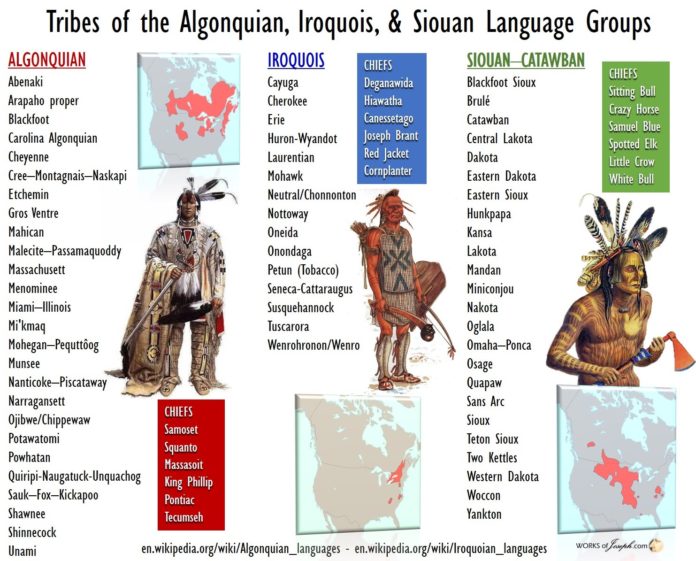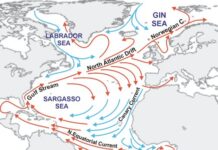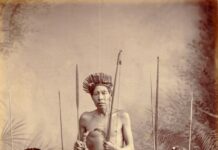- The Book of Mormon, which contained Lehi’s prophecies, was published in March, 1830. The infamous “Indian Removal Act” was passed by Congress on May 28, 1830.
- In speaking to the Lamanites and others who are disobedient, the Book of Mormon said, “and he will take away from them the lands of their possessions, and he will cause them to be scattered and smitten.” 2 Nephi 1:10-11
- At the beginning of the 1830s, nearly 125,000 Native Americans lived on millions of acres of land in Georgia, Tennessee, Alabama, North Carolina and Florida–land their ancestors had occupied and cultivated for generations. By the end of the decade, very few natives remained anywhere in the southeastern United States. Working on behalf of white settlers who wanted to grow cotton on the Indians’ land, the federal government forced them to leave their homelands and walk thousands of miles to a specially designated “Indian territory” across the Mississippi River. This difficult and sometimes deadly journey is known as the “Trail of Tears.”
- Indian removal took place in the Northern states as well. In Illinois and Wisconsin, for example, the bloody Black Hawk War in 1832 opened to white settlement millions of acres of land that had belonged to the Sauk, Fox and other native nations.
“Wherefore, this land is consecrated unto him whom he shall bring. And if it so be that they shall serve him according to the commandments which he hath given, it shall be a land of liberty unto them; wherefore, they shall never be brought down into captivity; if so, it shall be because of iniquity; for if iniquity shall abound cursed shall be the land for their sakes, but unto the righteous it shall be blessed forever.” 2 Nephi 1:7

HISTORY OF THE CHURCH OF JESUS CHRIST OF LATTER-DAY SAINTS
Period I History of Joseph Smith, the Prophet by Himself
Volume II An Introduction and Notes by B. H. Roberts
CHAPTER XXVI. OPENING OF THE YEAR 1836–THE AMERICAN INDIANS–SPECIAL
COUNCIL MEETINGS IN KIRTLAND.
January 6, 1836
Much has been said and done of late by the general government in relation to the Indians ( Lamanites) within the territorial limits of the United States. One of most important points in the faith of the Church of the Latter Day Saints, through the fullness of the everlasting Gospel, is the gathering of Israel (of whom the Lamanites constitute a part)—that happy time when Jacob shall go up to the house of the Lord, to worship Him in spirit and in truth, to live in holiness; when the Lord will restore his judges as at the first, and His counselors as at the beginning; when every man may sit under his own vine and fig tree, and there will be none to molest or make afraid; when He will turn to them a pure language, and
the earth will be filled with sacred knowledge, as the waters cover the great deep; when it shall no longer be said, the Lord lives that brought up the children of Israel out of the land of Egypt, but the Lord lives that brought up the children of Israel from the land of the north, and from all the lands whither He has driven them. That day is one, all important to all men.
In view of its importance, together with all that the prophets have said about it before us, we feel like dropping a few ideas in connection with the official statements from the government concerning the Indians. In speaking of the gathering, we mean to be understood as speaking of it according to scripture, the gathering of the elect of the Lord out of every nation on earth, and bringing them to the place of the Lord of Hosts, when the city of righteousness shall be built, and where the people shall be of one heart and one mind, when the Savior comes; yea, where the people shall walk with God like Enoch, and be free from sin. The word of the Lord is precious; and when we read that the vail spread over all nations will be destroyed, and the pure in heart see God, and reign with Him a thousand years on earth, we want all honest men to have a chance together and build up a city of righteousness, where even upon the bells of the horses shall be written Holiness to the Lord. The Book of Mormon has made known who Israel is, upon this continent. And while we behold the government of the United States gathering the indians, and locating them upon lands to be their own, how sweet it is to think that they may one day be gathered by the Gospel! Our venerable President of these United States (Andrew Jackson) speaks of the Indians as follows: President Andrew Jackson’s Views on the Policy of the General Government with Reference to the Indians. The plan of removing the aboriginal people who yet remain within the settled portions of the United States, to the country west of the Mississippi River, approaches its consummation. It was adopted on the most mature consideration of the condition of this race, and ought to be persisted in till the object is accomplished, and prosecuted with as much vigor as a just regard to their circumstances will permit, and as far as their consent can be obtained. All preceding experiments for the improvement of the Indians have failed. It seems now to be an established fact, that they cannot live in contact with a civilized community and prosper. Ages of fruitless endeavors have at length brought us to a knowledge of this principle of intercommunication with them. The past we cannot recall, but the future we can provide for, Independently of the treaty stipulations into which we have entered with the various tribes for the usufructuary rights ceded to us, no one can doubt the moral duty of the government of the United States to protect, and, if possible, to preserve and perpetuate the scattered remnants of this race which are left within our borders. In the discharge of this duty, an extensive region in the west has been assigned for their permanent residence. It has been divided into districts, and allotted among them. Many have already removed, and others are preparing to go; and, with the exception of two small bands, living in Ohio and Indiana, not exceeding fifteen hundred persons, and of the Cherokees’ all the tribes on the east side of the Mississippi, and extending from Lake Michigan to Florida, have entered into engagements which will lead to their transplantation.

The plan for their removal and re-establishment is founded upon the knowledge we have gained of their character and habits, and has been dictated by a spirit of enlarged liberality. A territory exceeding in extent to that relinquished has been granted to each tribe. Of its climate, fertility, and capability to support an Indian population, the representations are highly favorable. To these districts the Indians are removed at the expense of the United States, and with certain supplies of clothing, arms, ammunition, and other indispensable articles; they are also furnished gratuitously with provisions for the period of a year after their arrival at their new homes. In that time, from the nature of the country, and of the products raised by them, they can subsist themselves by agricultural labor, if they choose to resort to that mode of life. If they do not, they are on the skirts of the great prairies, where countless herds of buffalo roam, and a short time suffices to adapt their own habits to the changes which a change of the animals destined for their food may require.
Ample arrangements have also been made for the support of schools; in some instances, council houses and churches are to be erected, dwellings to be constructed for the chiefs, and mills for cotton use. Funds have been set apart for the maintenance of the poor, the most necessary mechanical arts have been introduced, and blacksmiths, gunsmiths, wheelwrights, millwrights, etc., are supported among them. Steel and iron, and sometime salt are purchased for them; and plows and other farming
utensils.
Domestic animals, looms, spinning wheels, cards, etc., are presented to them; and besides these beneficial arrangements, annuities are in all cases paid, amounting in some instances to more than thirty dollars for each individual of the tribe, and in all cases sufficiently great, if justly divided and prudently expended, to enable them, in addition to their own exertions, to live comfortably. And as a stimulus for exertion, it is now provided by law, that in all cases of the appointment of interpreters, or other persons employed for the benefit of the Indians, a preference shall be given to persons of Indian descent, if such can be found, who are properly qualified for the discharge of the duties.
Such are the arrangements for the physical comfort and for the moral improvement of the Indians. The necessary measures for their political advancement and for their separation from our citizens have not been neglected. The pledge of the United States has been given by Congress, that the country designated for the residence of this people shall be “forever secured and guaranteed to them.” A country west of Missouri and Arkansas has been assigned to them, into which the white settlements are not to be pushed. No political communities can be formed in that extensive region, except those that are established by the Indians themselves, or by the United States for them and with their concurrence. A barrier has thus been raised for their protection against the encroachments of the citizens, and guarding the Indians as far as possible, from those evils which have brought them to their present condition.
Summary authority has been given by law, to destroy all ardent spirits found in their country without waiting the doubtful result and slow process of a legal seizure.
I consider the absolute and unconditional interdiction of this article, among these people, as the first great step in their amelioration. Half-way measures will answer no purpose. These cannot successfully contend against the cupidity of the seller and the overpowering appetite of the buyer; and the destructive effects of the traffic are marked in every page of the history of our Indian intercourse.

Some general legislation seems necessary for the regulation of the relations which will exist in this new state of things between the government and people of the United States and those transplanted Indian tribes, and for the establishment among the latter, with their own consent, some of the principles of intercommunication which their juxtaposition will call for; that moral may be substituted for physical force; the authority of a few simple laws, for the tomahawk; and that an end may be put to those bloody wars, whose prosecution seems to have made a part of their social system.
After the further detail of the arrangements are completed, with a very general supervision over them, they ought to be left to the progress of events. These, I indulge the hope, will secure their prosperity and improvement; and a large portion of the moral debt we owe them will be paid.
In addition to the above, we extract the following from the report on Indian affairs, made to Congress at the present session. We add and arrange according to circumstances:
The United Nation–Chippewas, Ottowas and Pottawatamies –about 1,000 in number, removed since September, 1834–possess 5,000,000 of acres of land on the east side of the Missouri and lying north-west of the north-west corner of Missouri; [All these tribes may be rated at about 7,000]…………………………1,000
The Choctaws, about 19,000, in number, have 15,000,000 of acres, lying between the Red River and the Canadian………. 19,000
A small band of Quapaws, 200 or 300, perhaps near 95,000 acres, between the western boundary of the State of Missouri and the eastern boundary of the Osages………………………….300
The Creeks, about 3,000 or 4,000, have 13,140,000 acres on Arkansas and Canadian rivers……………………………………… 4,000
The Seminoles, and other Florida Indians, to the number of say 25,000, included as the owners of the above 13,140,000 acres……………………………………………………………………25,000
The Cherokees, amounting to say 16,000, have 13,000,000 of acres, near the 36th degree of north latitude…………………. 16,000
The Kickapoos, something less than 1,000, have 160,000 acres north of Fort Leavenworth …………………………………………1,000
The Delawares, nearly 1,000, have 200,000 acres west and south of the Kickapoos………………………………………….1,000
The Shawnees, 1,200 or 1,400, have 1,600,000 acres south side of Kansas River…………………………………………………1,400
The Ottawas, about 200, have 30,000 acres south of the Shawnees……………………………………………200
The Weas, Pinkeshaws, Peoria, and Kashaskias, say 500 in all, have 260,000 acres south of the Shawnees……………………500
The Senecas and Shawnees, say 500, have 100,000 acres on the western boundaries of the State of Missouri………………….500
Of the native tribes west of the Mississippi, the report is as follows:
 Sioux.. …………………………………….. 27,000
Sioux.. …………………………………….. 27,000
Iowas……………………………………….. 12,000
Sacs of the Missouri…………………….500
Omahas………………………………………1,400
Ottoes and Missourias……………..1,600
Pawnees…………………………………….10,000
Camanches………………………………….7,000
Mandans ……………………………………15,000
Minatares……………………………………15,000
Assinaboins…………………………………..8,000
Crees……………………………………….. 3,000
Gros Ventres…………………………………3,000
Crows……………………………………….. 3,500
Quapaws……………………………………… 450
Caddoes……………………………………… 2,000
Poncas………………………………………. 800
Arickarees…………………………………… 3,000
Cheyenes…………………………………….. 2,000
Blackfeet……………………………………. 30,000
Foxes……………………………………….. 1,600
Anepahas, Kioways, etc…………….14,000
Osages…………….. ……………………….. 5,120
Kansas………………………………………. 1,471
Sacs………………………………………… 4,800
The joy that we shall feel, in common with every honest American, and the joy that will eventually fill their bosoms on account of nationalizing the Indians, will be reward enough when it is shown that gathering them to themselves, and for themselves, to be associated with themselves, is a wise measure, and it reflects the highest honor upon our government.
May they all be gathered in peace, and form a happy union among themselves, to which thousands may shout, Esto perpetua. “Let it be eternal” HISTORY OF THE CHURCH OF JESUS CHRIST OF LATTER-DAY SAINTS Period I History of Joseph Smith, the Prophet by Himself Volume II An Introduction and Notes by B. H. Roberts

“Whenever I hear anyone, including myself say, I know the Book of Mormon is True, I want to exclaim that’s nice but it isn’t enough. We need to feel deep the inmost parts of our hearts that the Book of Mormon is unequivocally the word of God. We must feel it so deeply that we wouldn’t want to live even one day without it. I might paraphrase President Brigham Young in saying, I wish I had the voice of seven thunders to wake up the people to the truth and power of the Book of Mormon.” Elder Russell M. Nelson Sept 30, 2017 General Conference.





